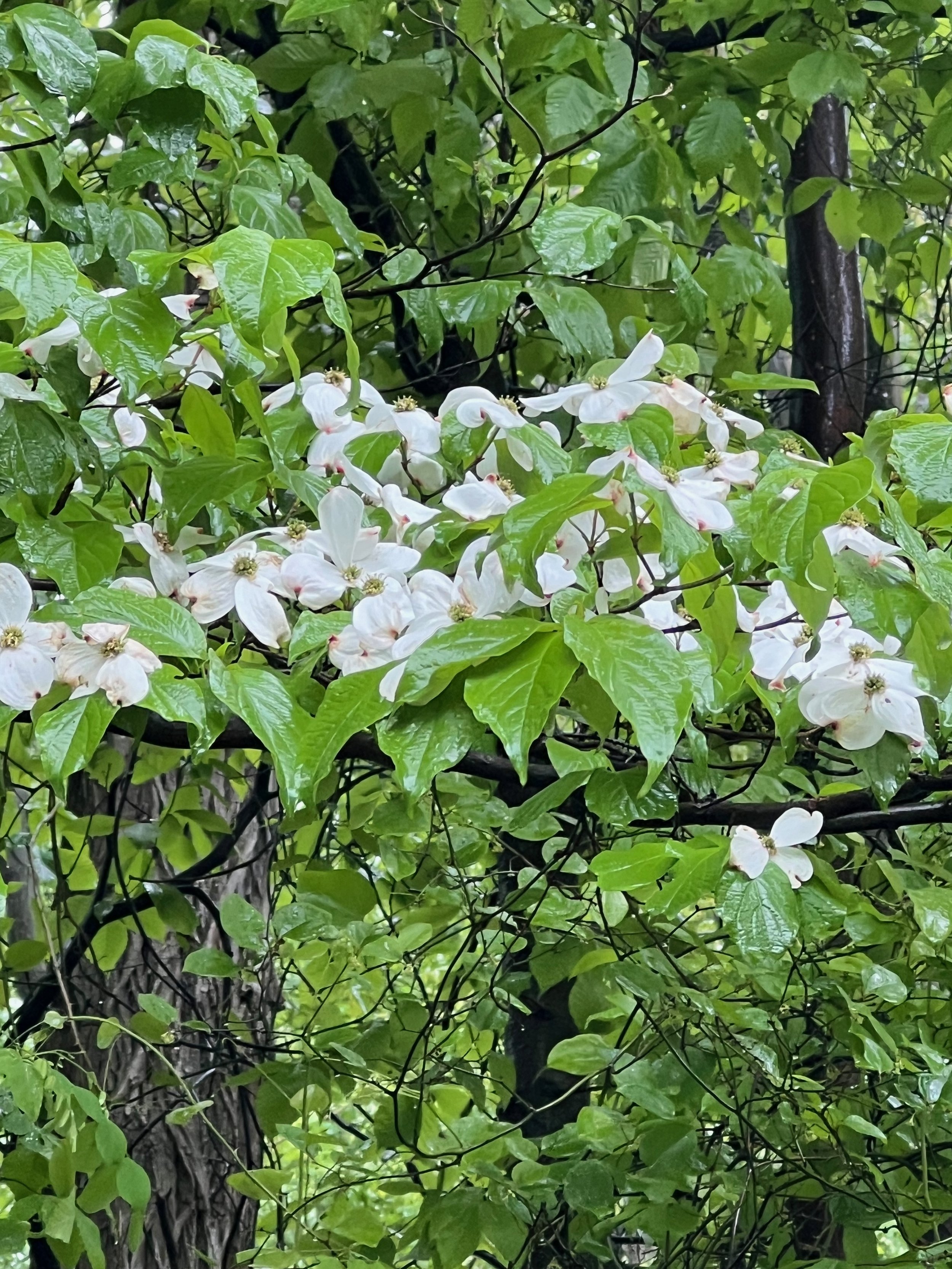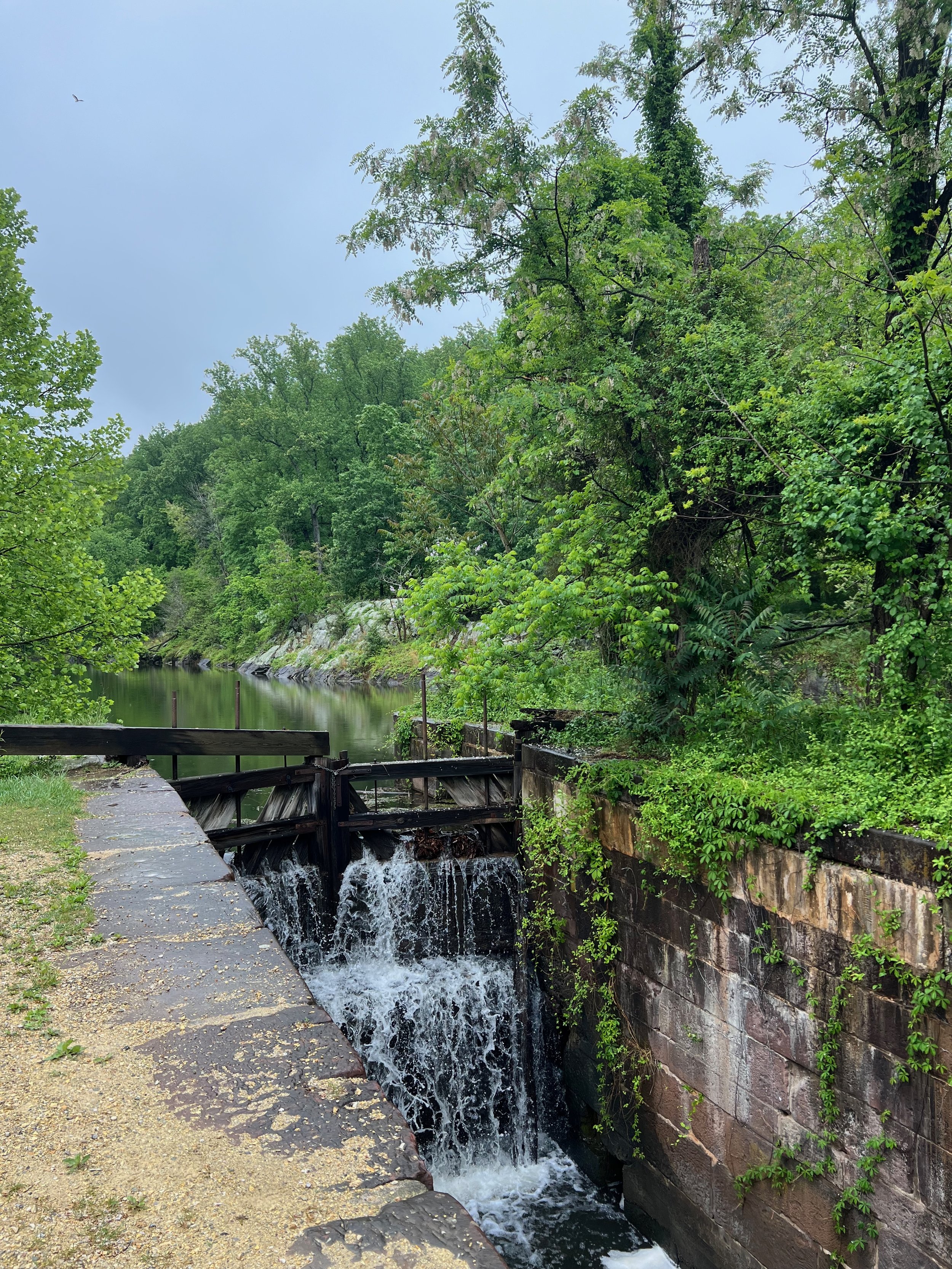I took a trip this past weekend, on my own, to see some high school friends in my old hometown of Gaithersburg, Maryland. It was a whirlwind of activity - wonderful dinners, driving around the old neighborhood and trying to figure out where I was and where everything happened (this is where my dad guerrilla gardened under the power lines! this is the pool where I spent my entire summer! this is the place where I wrecked my bike and split my head open!).
One of my childhood homes
It was raining pretty much the entire weekend, and I was struck by all the water everywhere. Lakes, streams, creeks, ditches, all filled with water. Green lawns (many homeowners don’t even have irrigation systems), green pastures, leafy leafy leafy highway trees. Trees of all kinds we don’t see in California, or if we do, only as specimens in botanic gardens.
During the day, I was pretty much on my own, so naturally I went on a lot of hikes. One day, I went to a local park that I had visited many times as a child with my parents, and then as a teenager with my friends, Sugarloaf Mountain. It’s a rocky hill, not terribly high in elevation (Maryland has a lot of rolling hills - it’s not flat, but it isn’t ‘peaky,’ either), and when you’re young, big rocks are fun to scramble on. I had never hiked around the mountain, though, so I did that as well as go to the peak.
On another day, I went to Harper’s Ferry, which is just over the MD and VA borders in West Virginia, where the Potomac and Shenandoah rivers meet. You might remember that this was the place of abolitionist John Brown’s raid on the national armory in 1859, which helped catapult the nation into Civil War. It was interesting to read all about that history, see the old buildings, walk a defunct railroad track, and hike up and down the rivers. The Appalachian and American Discovery trails both go through this area, so I did see some thru-hikers which was naturally a highlight for nerdy hiker me.
On yet another day, I went to the Maryland side of the Great Falls of the Potomac River, to walk along the Chesapeake and Ohio Canal (C&O Canal), and this is where the title of this post comes in. The falls were spectacular, the amount of water astounding, the wildlife abundant, and my hike was great. The canal locks are fascinating as is the history of the canal itself, which runs for 185 miles and was constructed in the early 1800s as a way to move goods throughout the east.
I spent a good deal of time in the Great Falls Tavern visitor’s center. There were lots of exhibits featuring the history of the canal and honoring the people who envisioned it and built it. But one thing was conspicuously missing. There was no mention of the native peoples of this land, the indigenous communities that were removed in order for this land to be used for the expansion of capitalism and profit.
So I went to the ranger manning the center (he was probably in his early 30s) and said, “Maybe I’ve missed it somehow, but is there any information about the native peoples who lived, and presumably still live, in this area, and how they were affected by the canal?” The ranger paused a minute, then responded, “You can probably find that information online. We don’t keep it here because it is not relevant to the history of the canal.”
This came on the heels of a conversation I had with my friends the evening before. I’m not sure how it came up, but I asked them, do you know the native tribes who lived on the land you live on now? My friends are smart, worldly, learned. But they did not know. Do you know?
You may be asking at this point, IS this information relevant? I encourage you to think deeply about this. While you’re at it, think about why it might be especially relevant to have this information available in our country’s national parks, which host thousands of visitors every year, many of them children.
I do not claim to speak for Indigenous peoples, as I am not one of them; I come from European settlers who arrived in the late 1800s. But this issue is relevant to me personally because I am trying to understand how I can help right the wrongs of our history.
To that end, today I have spent some time contacting the Secretary of the Interior, the Director of the National Park Service, the Assistant Secretary of the Bureau of Indian Affairs, and the C&O Operations Manager. I am doubtful if they will listen to my messages, read my emails, or even open the letter that I’ve just put in the mail. However, doing nothing is not an option.








